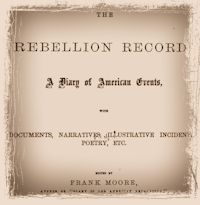May 12.—A force of National troops under the command of Colonel Davis, First Texas cavalry, left Sevieck’s Ferry, on the Amite River, La., on an expedition along the Jackson Railroad. They struck the railroad at Hammond Station, where they cut the telegraph and burned the bridge.— New-Orleans Era.
—A party of sixty mounted rebels were encountered at a point between Woodburn and Franklin, Ky., by a detachment of Union troops, who defeated them and put them to flight.
—S. L. Phelps, commanding the Tennessee division of the Mississippi squadron, took on board his gunboats fifty-five men and horses of the First Western Tennessee cavalry, under the command of Colonel W. K. M. Breckinridge, and landed them on the east side of the Tennessee River, sending the gunboats to cover all the landings above and below. Colonel Breckinridge dashed across the country to Linden, and surprised a rebel force more than twice his number, capturing Lieutenant-Colonel Frierson, one captain, one surgeon, four lieutenants, thirty rebel soldiers, ten conscripts, fifty horses, two army wagons, arms, etc. The court-house, which was the rebel depot, was burned, with a quantity of army supplies. The enemy lost three killed. The Nationals lost no men, but had one horse killed. Colonel Breckinridge, after this exploit, reached the vessel in safety, and recrossed the river.— Com. Phelps’s Despatch.
—The battle of Raymond, Miss., was fought this day, between the rebels under General Gregg, and the Union troops commanded by General McPherson.— (Doc. 190.)



